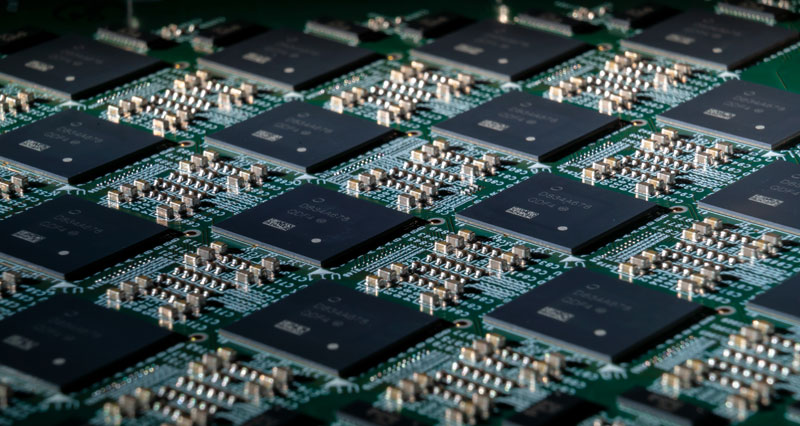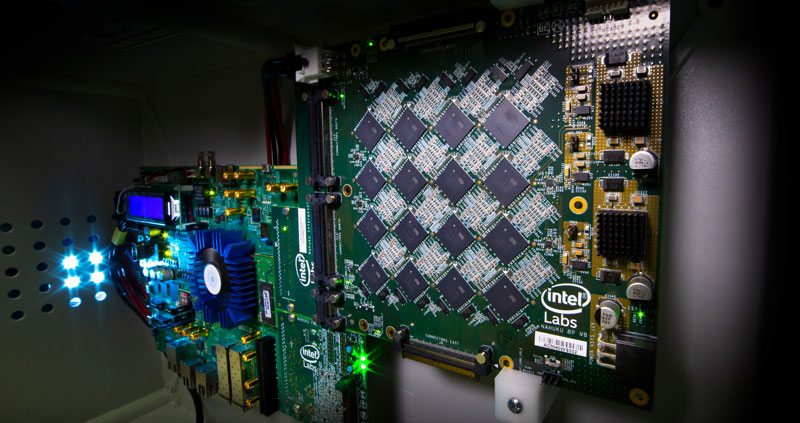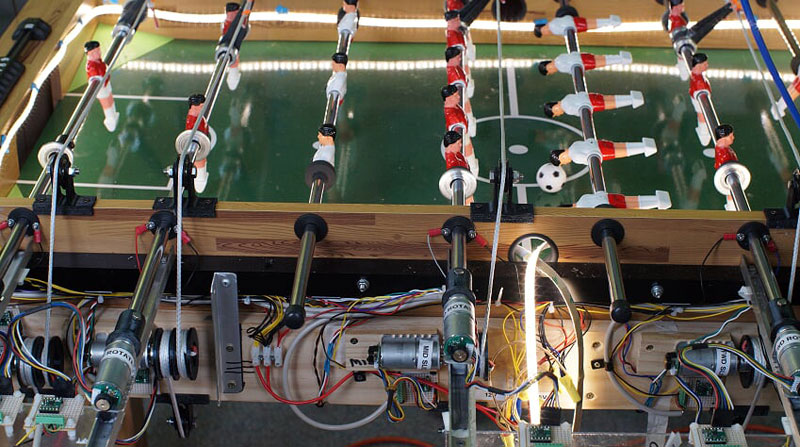Intel Pohoiki Beach - neuromorphic system with 8 million neurons

The neuro-morphic Intel Loihi processor announced two years ago has been a thing in itself all this time — existing in nature, but not widely available. Now the case takes a slightly different turn: the Loihi-based platform Pohoiki Beach presented this week not only gives the chip a form factor suitable for practical use, but also brings it to the research masses. So far, however, we are talking only about the participants of the special academic program of Intel, but the line of neuromorphic computing systems, as well as the interested audience, will expand.
Let me remind you that the Intel Loihi processor, whose architecture is similar to the structure of the human brain, is a chip made using the 14-nm process technology and containing 130 thousand neurons and 130 million synapses. Thanks to its special device, Loihi demonstrates very high performance indicators for a certain range of tasks (sparse coding algorithms, search graphs, constraint satisfaction tasks, and many other aspects of AI problems).

')
To use Loihi in real conditions, they are combined into computational arrays using Intel Nahuku boards, which can carry from 8 to 32 processors. In the photo here you see a version of such a board connected to the development kit for the Intel Arria 10 FPGA. The Pohoiki Beach system consists of several Nahuku boards and contains a total of 64 Loihi processors, that is, more than 8 million neurons.
The researchers, who have already tested Loihi in action, are very positive about the energy efficiency of the chip. According to them, when passing deep learning benchmarks, it consumes 109 times less energy than a GPU and 5 times less energy than specialized devices for inference. Moreover, with an increase in the network by 50 times, the Loihi consumption grows only by 30% without dropping performance, while the specialized IoT iron gives a 500% increase in consumption and stops cope with the load in real time.

At the just-completed three-week practical lesson in 2019 Telluride Neuromorphic Cognition Engineering Workshop, researchers built a machine for playing table football on the basis of Loihi. The system showed excellent sensitivity with fast feedback, as well as good planning and control capability.
In March 2018, Intel founded the Neuromorphic Research Community (INRC), the Neuromorphic Research Community for the further development of neuromorphic algorithms, software, and applications. INRC members will be provided access to Loihi cloud services, as well as computing facilities based on it, such as Kapoho Bay, a USB stick device. Later this year, a more productive version of Pohoiki Beach called Pohoiki Springs with more Loihi processors will be released.
Source: https://habr.com/ru/post/460211/
All Articles